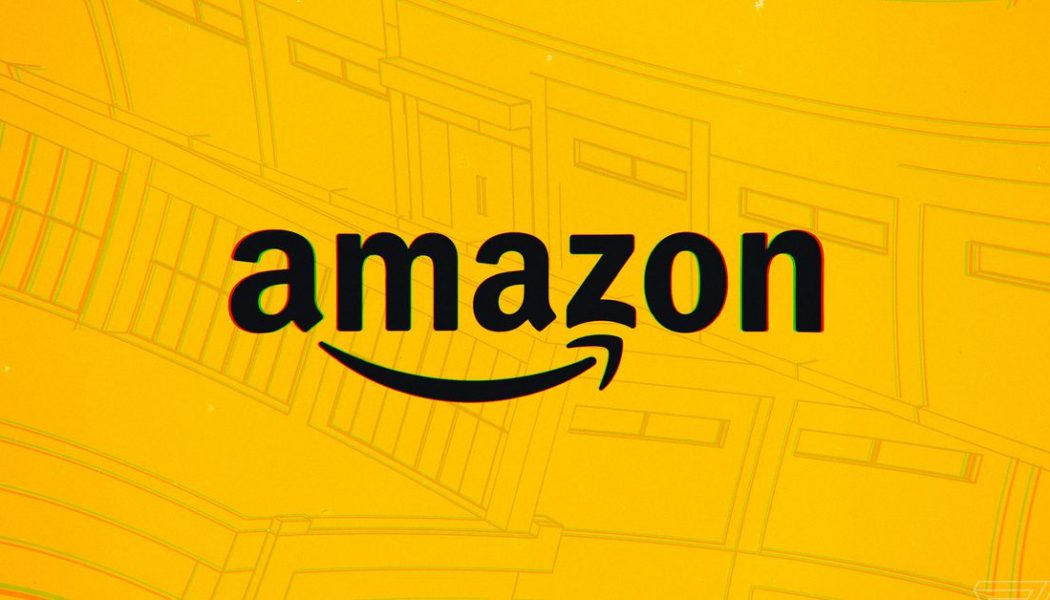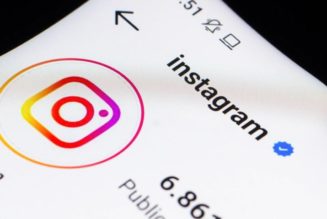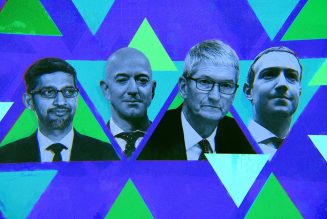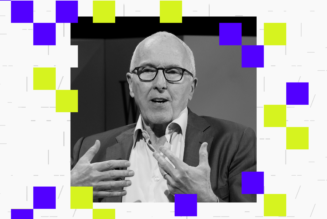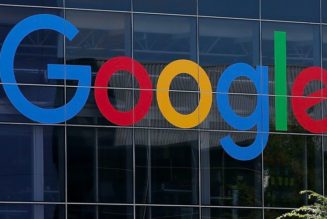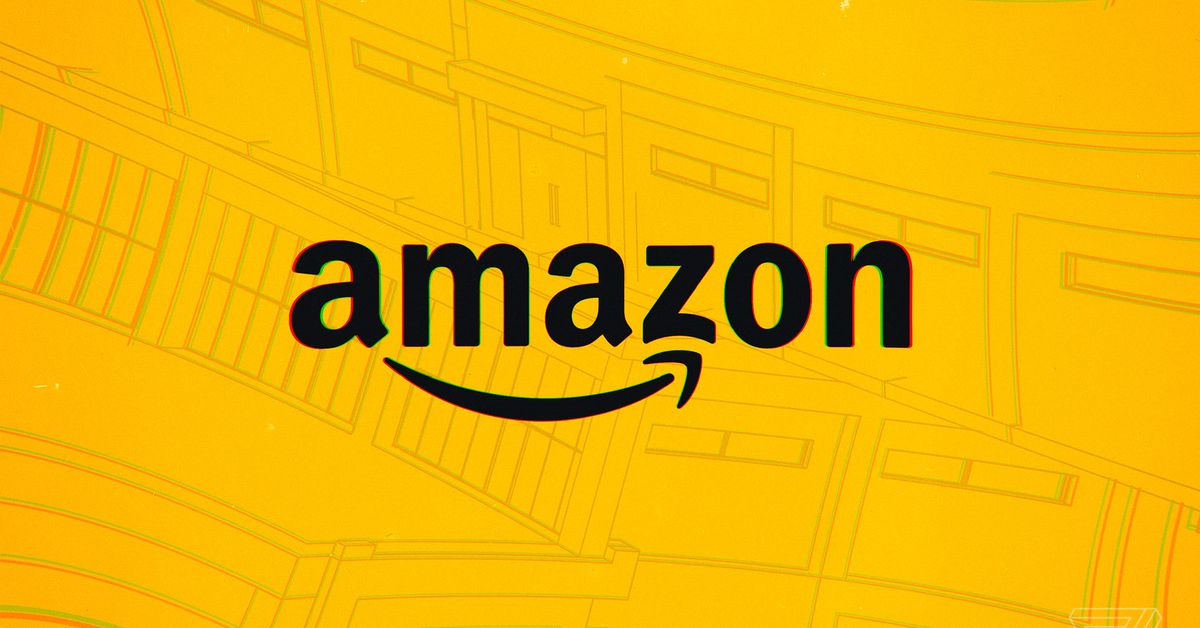
In the latest instance of unrest at the company, several thousand Amazon workers walked off the job Friday. The occasion was International Workers’ Day, also known as May Day, and the Amazonians joined workers at Instacart, FedEx, Target, and Walmart demanding better conditions for work that the government has deemed essential, and their own employers have frequently called heroic.
The protests to date have drawn attention to widespread outbreaks of COVID-19 in Amazon warehouses, the lack of protective equipment for warehouse personnel, and the low pay and draconian sick-leave policies that workers in fulfillment centers have endured for years. And they’ve been effective in at least two ways. One, Amazon increased pay and expanded sick leave as the pandemic spread. And two, as I noted here last month, they have created a sense of solidarity between Amazon’s fulfillment center workers and its white-collar workforce, which has increasingly been willing to speak out on their behalf.
Amazon played down the effectiveness of the walkout. “While there was tremendous media coverage of the protests we saw no measurable impact on operations,” the company told me. “Health and safety is our top priority and we expect to spend more than $800 million in the first half of the year on COVID-19 safety measures.”
But on Monday, we saw one of the most striking acts of solidarity between Amazon workers to date. Tim Bray, a well known technologist who served as a vice president at Amazon Web Services and held the title of distinguished engineer, quit the company in protest of the treatment of his coworkers. In a scathing blog post, Bray accused Amazon of repeatedly firing warehouse workers on flimsy pretexts after they complained about working conditions in public. (Amazon denies retaliating against the employees.) Bray writes:
Amazon is exceptionally well-managed and has demonstrated great skill at spotting opportunities and building repeatable processes for exploiting them. It has a corresponding lack of vision about the human costs of the relentless growth and accumulation of wealth and power. If we don’t like certain things Amazon is doing, we need to put legal guardrails in place to stop those things. We don’t need to invent anything new; a combination of antitrust and living-wage and worker-empowerment legislation, rigorously enforced, offers a clear path forward. […]
Firing whistleblowers isn’t just a side-effect of macroeconomic forces, nor is it intrinsic to the function of free markets. It’s evidence of a vein of toxicity running through the company culture. I choose neither to serve nor drink that poison.
Bray’s cannonball of a blog post landed just days after Amazon, historically clumsy at public relations, had begun to show signs that it was reading the room. With more scrutiny developing around both its working conditions and its pandemic-related surge in revenue, the company took pains not to appear as if it were profiteering off the recession. Here’s Cameron Faulkner and Jacob Kastrenakes at The Verge:
Amazon expects to spend $4 billion or more — the predicted operating profit for the company’s entire coming quarter — just on COVID-19-related expenses. In a quarterly earnings release today, Amazon CEO Jeff Bezos said the expenses will come from spending on personal protective equipment (PPE), cleaning for facilities, “higher wages for hourly teams,” and expanding its own COVID-19 testing capabilities. […]
Bezos’ note tries to make Amazon sound serious about “keeping employees safe,” telling shareholders to “take a seat” while the company ramps up this spending. “The best investment we can make is in the safety and well-being of our hundreds of thousands of employees,” Bezos writes.
This is the right thing to do, of course, even if it’s also in the company’s best interests. It’s notable to me less for the size of investment, however large, than for the way it acknowledges and responds to mounting external pressures on the company. For its first two decades, Amazon was able to evade sustained scrutiny by robotically repeating its mantra of “customer obsession.” In the COVID-19 era, the company has finally been forced to find some new words.
A series of investigative reports in the press and regulatory pressure from Congress have surely played their part in the shift. But the real pressure to change has come from Amazon’s own workers. Tech giants can’t stay ahead of their competition without a brilliant, motivated, mission-driven workforce — and brilliant, motivated, mission-driven people tend to be highly sensitive to the treatment of their coworkers. Amazon is yielding to its workers because, in this fraught moment, workers have real leverage.
Facebook learned this lesson in 2018. The Cambridge Analytica data privacy scandal, along with outrage over Russian interference on the platform during the 2016 US presidential election, ravaged internal morale. This, in turn, made it harder for Facebook to recruit — with acceptances of Facebook job offers dropping as much as 50 percent in 2019. And it led to a series of high-profile denunciations from company co-founders, early employees, and top executives.
That’s what makes Bray’s exit so significant. It signals the arrival of a new moment in Amazon’s crisis — one of open dissent at the upper echelons of the company. Amazon famously asks employees on the losing end of an argument to “disagree and commit.” Bray suggests that at least on the subject of working conditions, high-level employees who disagree would rather clear out.
Virus tracker
Total cases in the US: More than 1,178,200
Total deaths in the US: At least 68,300
Reported cases in California: 55,355
Total test results (positive and negative) in California: 715,751
Reported cases in New York: 324,357
Total test results (positive and negative) in New York: 985,911
Reported cases in New Jersey: 128,269
Total test results (positive and negative) in New Jersey: 275,066
Reported cases in Massachusetts: 68,087
Total test results (positive and negative) in Massachusetts: 314,646
Data from The New York Times. Test data from The COVID Tracking Project.
Pandemic
As the spread of COVID-19 has turned into the biggest story in the world, we’ve started to feel like it makes less sense to have a dedicated “pandemic” section. Instead we’re going to try sorting these stories as we did before — into stories that are about governance or about the industry — with an understanding that COVID-19 is the biggest force shaping those stories in the moment. We welcome any feedback you have on this change.
Governing
⭐ Apple and Google shared sample interface designs of what their automatic exposure notification system could look like. The designs are intended for developers, and show how specific alerts would appear and when particular API calls should be made. Russell Brandom at The Verge has the story:
The companies also laid out six specific principles that public-sector partners would be expected to uphold. Most notably, the apps can only be used for COVID-19 response efforts, will be restricted from using Location Services, and require opt-in consent before accessing the API or sharing a positive diagnosis. They also will not allow any form of targeted advertising in the resulting apps; any existing apps using targeted advertising or location services will need to turn off those systems before they access the API.
In one new twist, the companies plan to restrict access to a single app per country in an effort to avoid fragmentation. But the wording of the principle leaves the door open for countries like the US where the response has been led by states.
Here’s how contact tracing apps are developing around the world. Governments and technology companies are embracing the apps as a way to fight COVID-19. Here’s a good overview of the various attempts. (Gerrit De Vynck / Bloomberg)
The United Nations announced a new social distancing app designed to help alert people when they get too close to another person during the ongoing coronavirus pandemic. But the app is barely functional, and doesn’t perform the most basic of tasks. (Joseph Cox / Vice)
A group of Senate Republicans is planning to introduce a privacy bill that would regulate the data collected by coronavirus contact tracing apps. Unfortunately, the plan doesn’t make a lot of sense. One expert called it “a privacy ‘cure’ worse than the disease,” and said it amounted to “deregulation disguised as consumer protection.” (Kim Lyons / The Verge)
⭐ Extremists are trying to turn the coronavirus pandemic into a powerful recruiting tool in the deep corners of the internet and on the streets of state capitals. They’re using the public health crisis to bolster their white supremacist, anti-government agenda. Here’s Neil MacFarquhar at The New York Times:
What success the groups have had in finding fresh recruits is not yet clear, but new research indicates a significant jump in people consuming extremist material while under lockdown. Various violent incidents have been linked to white supremacist or anti-government perpetrators enraged over aspects of the pandemic.
The New Jersey Office of Homeland Security and Preparedness said in March that white supremacists have encouraged followers to conduct attacks during the crisis to incite fear and target ethnic minorities and immigrants. “We have noticed domestic extremist groups taking advantage of the COVID-19 pandemic by spreading disinformation,” Jared M. Maples, its director, said in a statement. The coronavirus has been dismissed as a hoax, painted as a Jewish-run conspiracy and, alternatively, described as a disease spread by nonwhite immigrants, he said.
Facebook has started to crack down on the anti-quarantine activists, taking down content that advocates violations of social-distancing guidelines. And so protesters are moving their organizing efforts to MeWe, a social media platform that says it prides itself on user privacy. (Paige Leskin / Business Insider)
Rep. Adam Schiff, (D-CA), asked the CEOs of Google, YouTube and Twitter to follow Facebook’s lead on coronavirus misinformation policies. I imagine this led to a lot of high-fiving on the Facebook policy team. (Lauren Feiner / CNBC)
Facebook’s plan to combat misinformation on the platform could be more effective if it actually tells people what misleading news they’ve interacted with. The co-author of one of the studies Facebook cited in its current strategy said retractions were more effective in correcting misinformation when they explicitly repeated the original falsehood. (Erin Brodwin / Stat)
Pandemic conspiracy theorists are using the Wayback Machine to promote “zombie content” that evades moderators and fact-checkers. (Joan Donovan / MIT Technology Review)
Why does COVID-19 overwhelm some countries and spare others? The answer may lie in demographics, culture, environment and the speed of government responses. But no one really knows. (Hannah Beech, Alissa J. Rubin, Anatoly Kurmanaev and Ruth Maclean / The New York Times)
Protests against coronavirus-related shelter-in-place restrictions continued to spread last week, organized on social media. The demonstrations have brought together a coalition of gun activists, vaccine opponents and anxious business owners. (Craig Timberg, Elizabeth Dwoskin and Moriah Balingit / The Washington Post)
The Bay Area has six criteria for loosening shelter-in-place restrictions. Here’s where each county is now. Some criteria are already being met, like new cases and hospitalizations staying flat. Others, like testing, are close. (Erin Allday / San Francisco Chronicle)
Three counties in California have announced they’re reopening nonessential businesses in defiance of Gov. Gavin Newsom’s statewide restrictions. Modoc County was the first to make the move, announcing it would reopen restaurants, bars, and churches. (Zeeshan Aleem / Vox)
After a single tweet, New York state paid a Silicon Valley engineer $69.1 million for ventilators that never materialized. The engineer, who has no apparent background in government contracting or medical devices, was apparently recommended by the White House. (Rosalind Adams and Ken Bensinger / BuzzFeed)
The coronavirus’s economic wreckage is going to make tech giants like Facebook, Google and Amazon even more dominant. But it also increases the risk of an antitrust collision with Washington. (Steven Overly and Leah Nylen / Politico)
Speaking of which: House lawmakers investigating Amazon for antitrust violations called on Jeff Bezos to testify at an upcoming hearing. The escalation between the company and members of Congress follows reports that Amazon employees used data from third-party sellers to launch its own competing products. (Tony Romm and Jay Greene / The Washington Post)
Chinese propaganda about COVID-19 is growing. To combat the spread of misinformation, experts say social media platforms should stop allowing paid political advertisements from media outlets registered under the Foreign Agents Registration Act. They should also consider banning state media accounts run by countries that block their own citizens from accessing the platforms. (Vanessa Molter, Renee DiResta and Alex Stamos / The Washington Post)
YouTube deleted conspiracy theorist David Icke’s channel from its platform. The company had repeatedly warning the popular creator that he had violated its policies by posting misleading information about the coronavirus pandemic.
Poynter Institute, a non-profit organization, launched a WhatsApp chatbot to debunk coronavirus-related hoaxes. The bot relies on information from over 100 independent fact-checkers in more than 70 countries. (Manish Singh / TechCrunch)
Joe Biden’s campaign has the daunting task of trying to make the 77-year-old candidate go viral on social media. The digital team is committed to staying away from the combative tone of President Trump, opting instead for a feel good strategy. But social media platforms tend to amplify conflict. (Alex Thompson / Politico)
Related: Candidates who lack name recognition are starting to act a lot like influencers in an effort to go viral on social media. As political campaigns continue to operate almost entirely online, the old political playbook is going out the window. (Makena Kelly / The Verge)
Nine mobile app companies are launching a new trade group to weigh in on the nation’s most controversial tech policy issues. They’re banding together to assert their independence from Apple and Google. (Naomi Nix and Ben Brody / Bloomberg)
TikTok has a new lobbyist tasked with changing its reputation in Washington. Michael Beckerman’s job is to persuade Congress that TikTok is a trustworthy social media platform that helps families bond and gives users authoritative health information.
Former Google CEO Eric Schmidt has become the prime liaison between Silicon Valley and the national security community. He sits on two government advisory boards aimed at jump starting technological innovation at the Defense Department, and is focused on revamping America’s defense forces with more engineers, more software and more AI. (Kate Conger and Cade Metz / The New York Times)
Does Elon Musk’s Twitter meltdown — which included a tweet about Tesla’s share price being too high — constitute securities fraud? Elizabeth Lopatto investigates. (But probably not.) (Elizabeth Lopatto / The Verge)
Industry
Facebook has started to reopen some of its content moderation centers and allow contractors to return to work if they want to. Employees will have their temperatures checked at the beginning of their shift and buildings will be deep-cleaned at the end of shifts. (BBC)
Facebook might lose its accreditation from the Media Rating Council, which gives companies confidence they are getting what they pay for when it comes to advertising on the platform. The council said Facebook failed to address advertiser concerns related to how it measures and reports data about video ads, among other things. (Jeff Horwitz and Suzanne Vranica / The Wall Street Journal)
Amazon told thousands of employees in Seattle and Bellevue that they can continue to work from home until at least October. The guidance applies to “employees who work in a role that can effectively be done from home.” (Benjamin Romano / The Seattle Times)
Twitter usage spiked to 166 million daily users in the first quarter of 2020, the largest growth the company has ever reported year-over-year. The increase in traffic still wasn’t enough to offset the sudden advertising decline caused by the pandemic. (Jacob Kastrenakes / The Verge)
Zoom doesn’t actually have 300 million daily active users as it previously claimed. The company admitted the mistake and edited references to say it actually has “300 million daily Zoom meeting participants” — a significant difference. (Tom Warren / The Verge)
Google Cloud engineers discussed acquiring Zoom in 2018. They went so far as to evaluate what would be a reasonable price to pay and calculated the unit economics for the service if it ran on Google’s servers. (Kevin McLaughlin / The Information)
Here’s how to look your best on Zoom, according to three male beauty influencers. (Joseph Longo / Mel)
Parents are hiring Zoom babysitters to hang out with their kids virtually. (Heather Kelly / The Washington Post)
The algorithms big companies use to manage their supply chains don’t work during pandemics. Normally, the system can reliably analyze things like inventory levels, historical purchasing trends, and discounts to recommend how much of a product to order. (Nicole Wetsman / The Verge)
Salesforce created a set of new tools, called Work.com, to help businesses and public agencies reopen workplaces safely. The new apps, available in June, include tools for tracking employee health, managing shifts so office spaces don’t get too dense, and keep tabs on local regulations. (Paayal Zaveri / Business Insider)
A day after Reddit announced it was introducing built-in subreddit chat rooms, the company rolled back the feature due to a site-wide bug. The platform’s vice president of product and community said Reddit had “made several errors” in the process of releasing the feature. (Monica Chin / The Verge)
TikTok is toying with the idea of producing a reality TV show. The move would be part of a push to broaden the app’s appeal and showcase different ways of using its videos. (Lucas Shaw / Bloomberg)
Netflix’s chief content officer, Ted Sarandos, wrote an op-ed in the Los Angeles Times about how film production can “safely resume in a COVID-19 world.” It varies heavily by locale, but the key seems to be available testing for cast and crew members.
Felix Kjellberg, the YouTuber better known as PewDiePie, signed an exclusive live-streaming deal with YouTube. The move comes almost exactly one year after Kjellberg announced that he was streaming exclusively on DLive, a small blockchain-based live-streaming site. (Bijan Stephen / The Verge)
YouTubers tricked Carole Baskin into giving her first major interview since Tiger King by pretending to be Jimmy Fallon. They pulled off the prank with a Zoom call, some sound bites from old clips, and one of the creators pretending to be a producer. (Lindsay Dodgson / Business Insider)
Things to do
Stuff to occupy you online during the quarantine.
Watch Juilliard students perform Ravel’s Bolero from their homes. It’s so good!
Zoom in style in a sci-fi ship decimating coronavirus particles.
If Zoom isn’t cutting it for you, try exploring a virtual world.
And finally…
I feel like I’m trapped in a horror movie full of idiots who think the monster is dead
— Saladin Ahmed (@saladinahmed) May 2, 2020
Talk to us
Send us tips, comments, questions, and job leads for Tim Bray (just kidding): casey@theverge.com and zoe@theverge.com.
